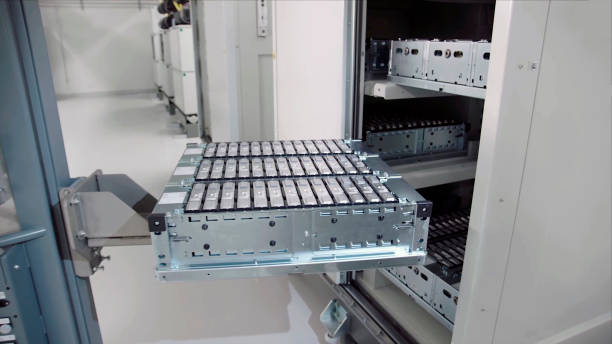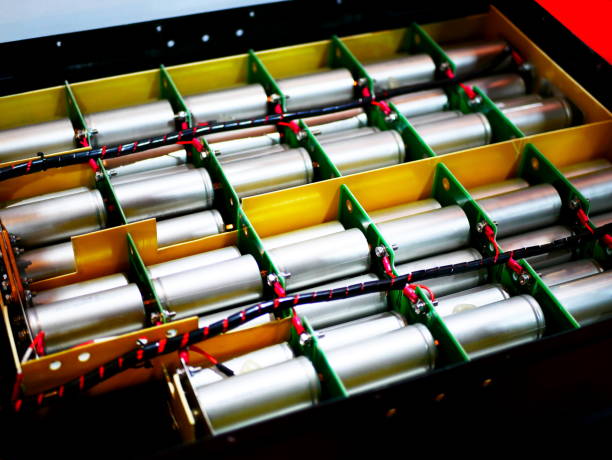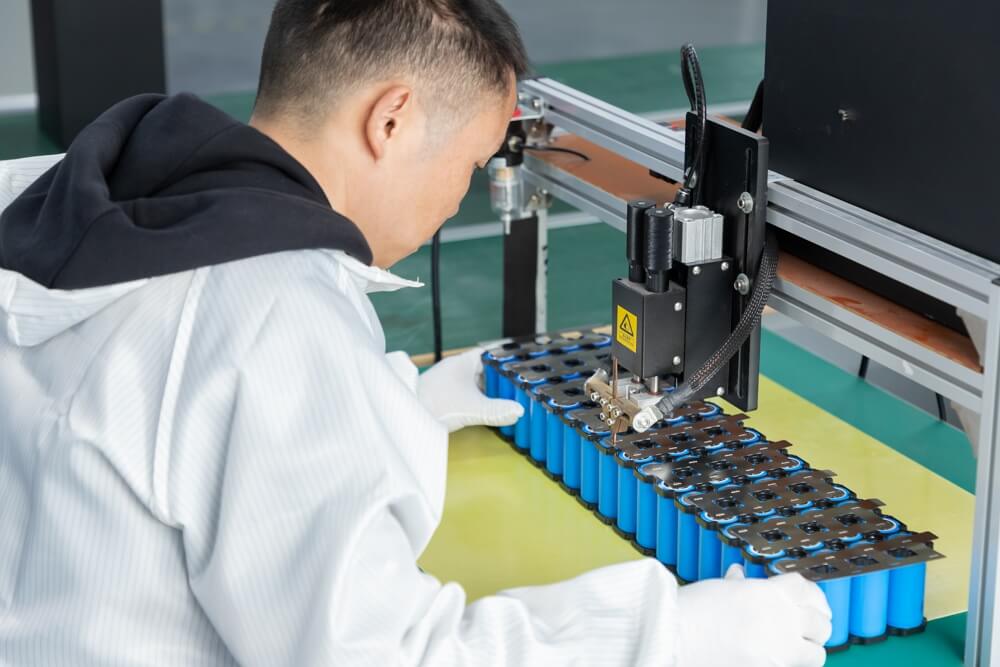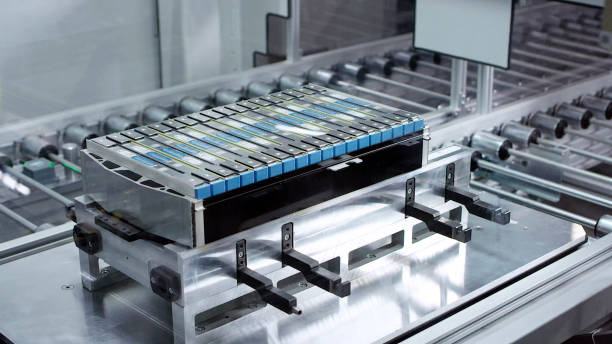Battery configuration is entirely software-based, including all aspects of sizing, configuration, operation, and real-time monitoring.
Both charging and discharging modes of lithium-ion batteries are capable of handling larger peak currents, although for brief periods. Peak charging along with discharging current limitations, as well as maximum current charging and discharging current restrictions, are often specified by battery cell manufacturers.
BMS is necessary for both prolonging a battery’s useful life and protecting the battery pack from potential dangers. Low self-discharge, power density, and low cost are three of lithium-ion batteries’ top qualities, which make them one of the best energy storage technologies. Let’s take a deeper look at what is BMS, what is BMS in battery and, what its functions, as well as advantages, are.

What is BMS in Battery?
An electronic regulator called a battery management system (BMS) keeps track of and regulates how rechargeable batteries are charged and discharged. The electronics application used in battery management systems could be as basic as measuring voltage and stopping the charging process when the target voltage is attained.
Most gadgets that employ rechargeable batteries use several sorts of battery management systems. They are also typical in data centers, where servers are kept online by UPS (uninterruptible power supplies). Battery management systems are found in everyday portable electronics like cell phones and MP3 players as well as vehicles, notably electric ones.
A more sophisticated BMS for lithium-ion batteries keeps track of numerous variables that affect battery performance and longevity in addition to assuring operational safety. They might keep an eye on single- or multiple-cell battery systems. Individual cell conditions can be monitored and managed via multi-cell systems.
How Does BMS for Lithium Ion Battery Work
To keep the temperature of the entire battery within a specific temperature range and maintain optimum battery performance, a BMS continuously monitors the temperatures throughout the pack and opens and closes various valves.
A lithium-ion battery management system is required to monitor the battery state and maintain operational safety because lithium-ion batteries can only be utilized under specific circumstances.
Most lithium-ion batteries should not be fast-charged below 5°C and shouldn’t be charged at all below 0°C. To achieve peak performance, BMS lithium battery thermal management frequently makes sure that a battery works within a constrained operating range. This safeguards functionality encourages longer life and supports a strong, dependable battery pack.
It is crucial to initially raise the battery temperature enough since charging icy lithium-ion cells is damaging to battery performance.
Protection Provided By Lithium Ion Battery Management System
BMS is available in a variety of forms, each with a unique set of characteristics and functionalities. Let’s look at the protection that is provided by lithium-ion battery management systems below.
1. Current Protection
One of the BMS’s most important safety features is the over-current protection functionality. To prevent harm to the battery and its associated components, the OCP will shut off the current if it surpasses the preset limit. The BMS overcurrent protection level is often programmable, allowing you to tailor it to the requirements of your application such as in BMS for LiFePO4.
Make sure to take into account both the maximum current consumption of your load and the short-circuit current of the battery when determining the OCP threshold. To provide some headroom, the BMS current protection must be set just a little bit below these settings.
2. Voltage Specifications
Simply turn off the source of charge to deal with high voltage, and the voltage will return to normal and turn on. The voltage for low voltage protection simply has to be raised by charging the battery.
Removing all loads from the battery will allow it to recharge to a level where it can be turned back on. Since it may take some time, this is typically not a good choice.
3. Overcharge and Over-discharge Protection
A typical battery management system protection setting for lithium-ion batteries is BMS overcharge protection. A lithium battery’s overcharge protection will turn on and halt any current from entering or leaving the battery if the voltage rises above the maximum safe level. These guards against further battery damage and promotes security.
Many battery management systems offer a crucial safety feature called BMS over-discharge protection or BMS low voltage cutoff. Whenever the lithium battery is discharged under a specific voltage threshold, usually between two to three volts per cell, this safeguard setting is engaged.
To keep the battery from being harmed, the battery management system may halt additional discharges when this happens.

4. Thermal Runaway Protection
Lithium-ion batteries may experience BMS thermal runaway protection if the battery cells become too hot. The battery may overheat during a thermal runaway event, which could result in an explosion or fire. Most lithium-ion batteries contain a BMS thermal runaway protection mechanism to stop this from occurring.
To stop the battery from entering thermal runaway, the TRP will turn it off if it becomes too hot. It is crucial to confirm if the TRP is turned on if you’re using a lithium-ion battery in a product with a TRP feature.
Thermal cutoff temperatures are also a common feature of lithium-ion batteries (TCT). The temperature that will make the battery shut off to avoid overheating is known as the TCT.
The thermal cutoff range is commonly set at about 80 degrees Celsius, but to be sure, you should check the details of your battery. It’s critical to keep batteries away from heat factors and use caution while charging them if they don’t include a TCT.
5. Cell Balancing
The technique of ensuring that all of the cells in a battery pack are close to the same level of charge is known as BMS cell balancing protection. This is crucial to keeping cells healthy and extending battery life.
Making sure that the cells in a lithium-ion battery are balanced is crucial when utilizing one. This indicates that the voltage of each cell in the battery pack is roughly the same. The battery may suffer harm if one or maybe more cells have a higher voltage compared to the others. When the BMS detects that one or more cells have achieved a higher state of charge over others, it typically performs cell balancing protection.
A battery pack’s cells may sustain damage or even fail if the BMS is unable to balance the cells properly. Therefore, it’s crucial to confirm that the BMS in your battery pack has sufficient BMS cell balancing protection abilities such as in BMS for li-ion batteries. To get the most from your battery pack, ensure that your BMS is turned on and that this task is completed correctly.
6. Short Circuit Protection
Other batteries just have one level of short-circuit protection, whereas some batteries have numerous levels. The most typical BMS short circuit safety mechanism is called thermal cutoff, and it kicks into action when the battery temperature exceeds a predetermined level. Fuse cuts and electronic cutoffs are further forms of safety.
When the battery terminals are inadvertently linked, a BMS short circuit protection may happen, resulting in a significant current flow. This might lead to the battery overheating and possibly igniting. If the short circuit safety detects a short circuit, it will disconnect the battery.
The majority of lithium batteries include a 200–300 mA short circuit protection setting. Normally, this is sufficient to shield the battery from harm, but if you are using strong gadgets that require more current, you might want to bump up the short circuit protection up to 500mA or more.
Polinovel Provides Lithium Battery with Safe and Reliable BMS
Polinovel is a reputable lithium battery manufacturer committed to producing lithium batteries that are safe, dependable, and offer maximum usable energy, excellent performance, and long life for a variety of applications. They provide lithium battery types for diverse domestic, industrial, and commercial applications.

Polinovel offers distributors and exporters durable and secure lithium battery products for industrial and residential usage as a cutting-edge lithium battery manufacturer featuring integrated R&D, production, and sales. Lithium batteries are made by Polinovel with consideration for their security, toughness, longevity, and wide temperature range.
The company is well recognized for providing clients with a variety of customization choices, including the branding and specifications of lithium batteries, and helping them to understand what is BMS.
Conclusion
For a battery pack to be safe, protected, dependable, and long-lasting in sustained operations, a battery management system for lithium batteries is essential.
To understand what is BMS, you must know that bms’ functional safety is its top priority. Preventing the voltage, current, and temperature of every cell or module within supervisory control from exceeding predetermined SOA limits is essential during charging and discharging operations.
Additionally, lower voltage threshold measures are closely monitored for both functional safety and lithium-ion cell protection. If you are a seller of lithium ion batteries, you need to be aware of battery management systems and reach out to reliable suppliers for the same. Contact Polinovel today to learn more on the subject.


